NIR reflectance spectra of powder minerals (2)
 Ankerite - Calcite - Bronzite - Enstatite - Pyroxenite
- Chondrite
Ankerite - Calcite - Bronzite - Enstatite - Pyroxenite
- Chondrite
| NIR spectrum of calcite with the 2 absorptions of the carbonate ion at 2350 and 2550 nm. |
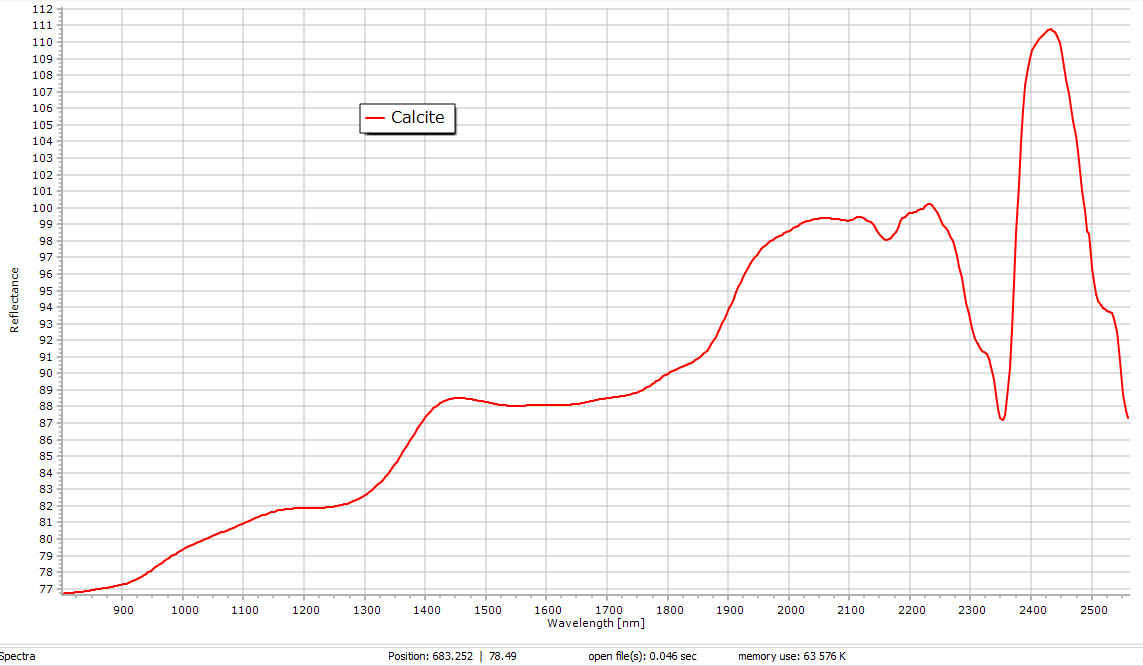 |
| In the ankerite spectrum, the 2 peaks of the carbonate are similar to calcite. In addition, iron 2 absorptions are visible at 1000-1300 cm-1 |
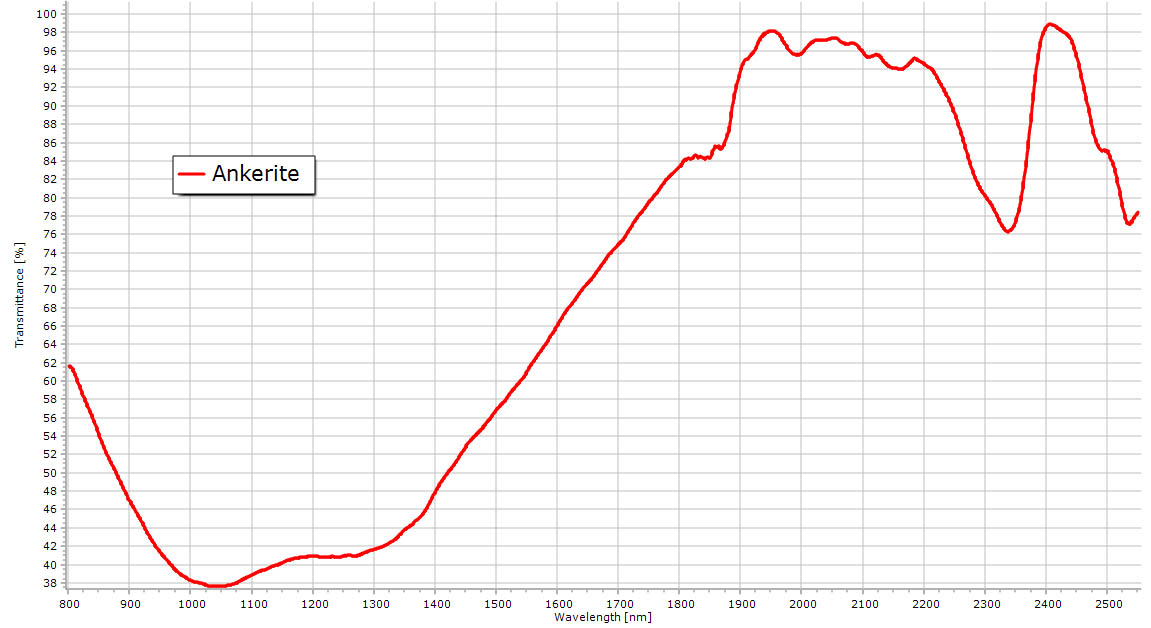 |
| Spectrum of enstatite showing the 2 crystal field absorptions of Fe++ at 900 and 1800 nm. This spectrum is characteristic of ortho pyroxene. |
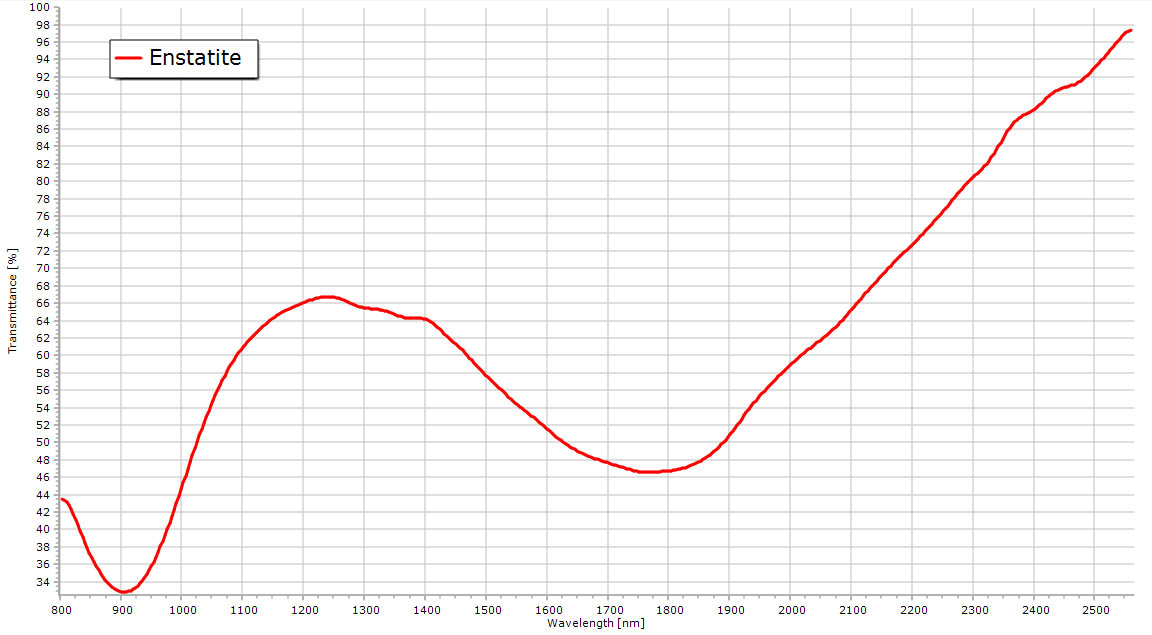 |
| Another example of the ortho-pyroxene spectrum is bronzite. |
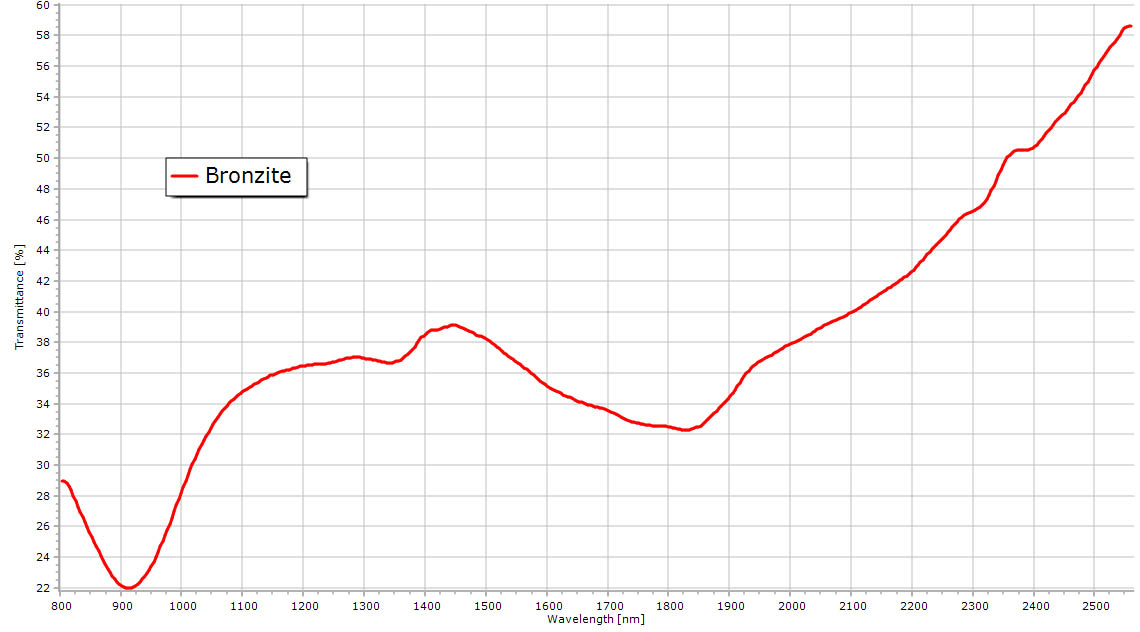 |
| Section of a pyroxenite indicating the presence of enstatite. |
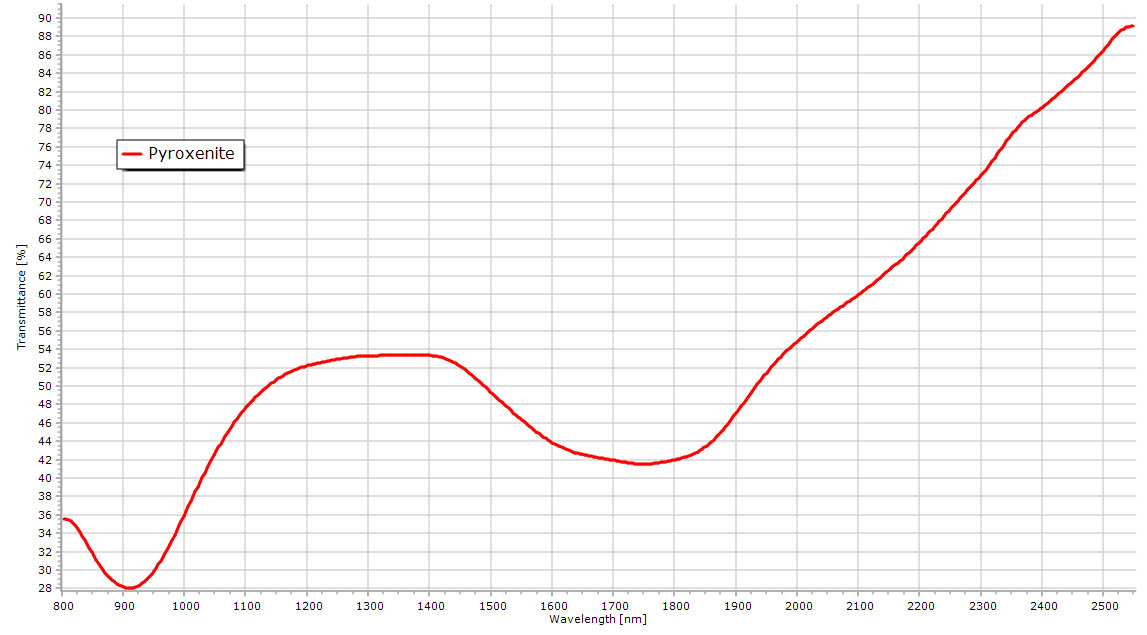 |
| NIR reflexion spectrum of an altered peridotite from Lanzo (Italy). The band at 1050 nm is iron II in olivine. Some hydrated minerals are also present in this rock as proved by the absorptions at 1380 nm and 2350 nm. The micro Raman analysis demonstrated that those minerals were serpentine, an altered product of olivine and chlorite material. Diopside is also found in this rock. It could contribute to the Iron II absorptions at 1050 nm and to the peak at 1850 nm. |
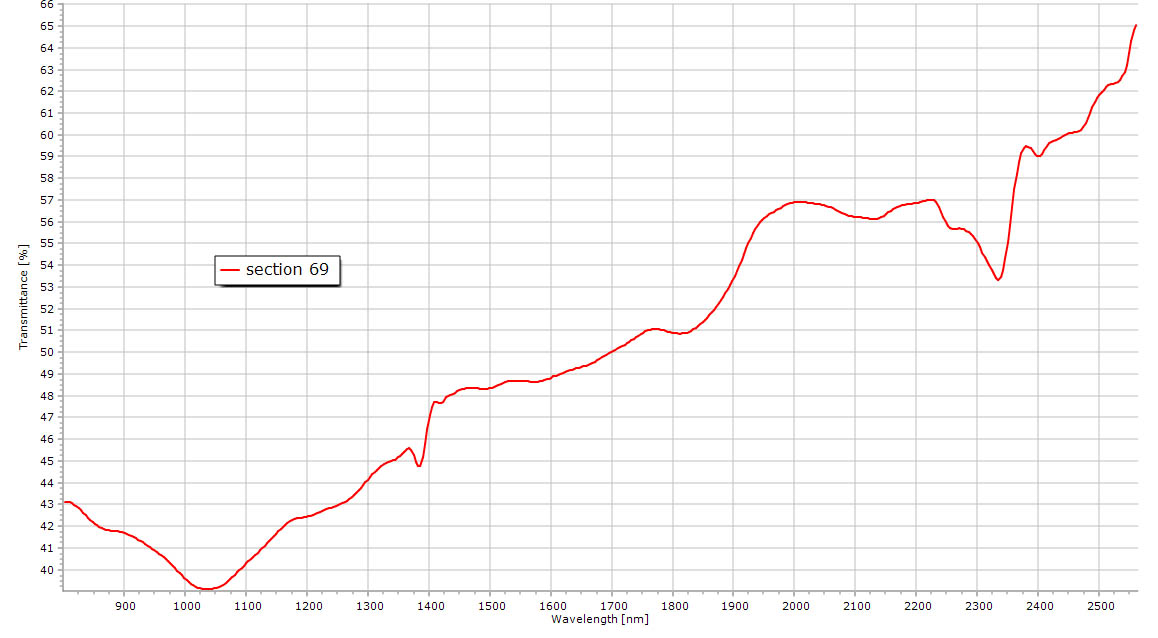 |
| NIR of a chondrite from Morocco. Ortho pyroxene can be seen in this spectrum from the peaks at 900 and 1800 nm. |
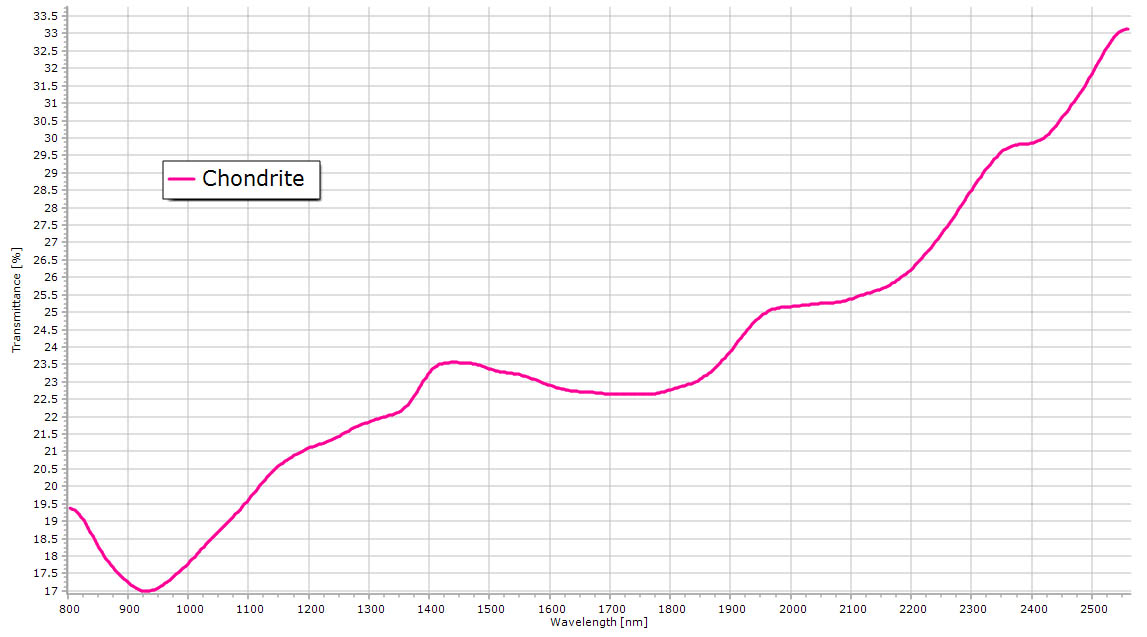 |
| Those diopside - hedenbergite spectra are poorly resolved due to the low concentration of iron in diopside and the too high concentration in hedenbergite which obscures the spectrum. |
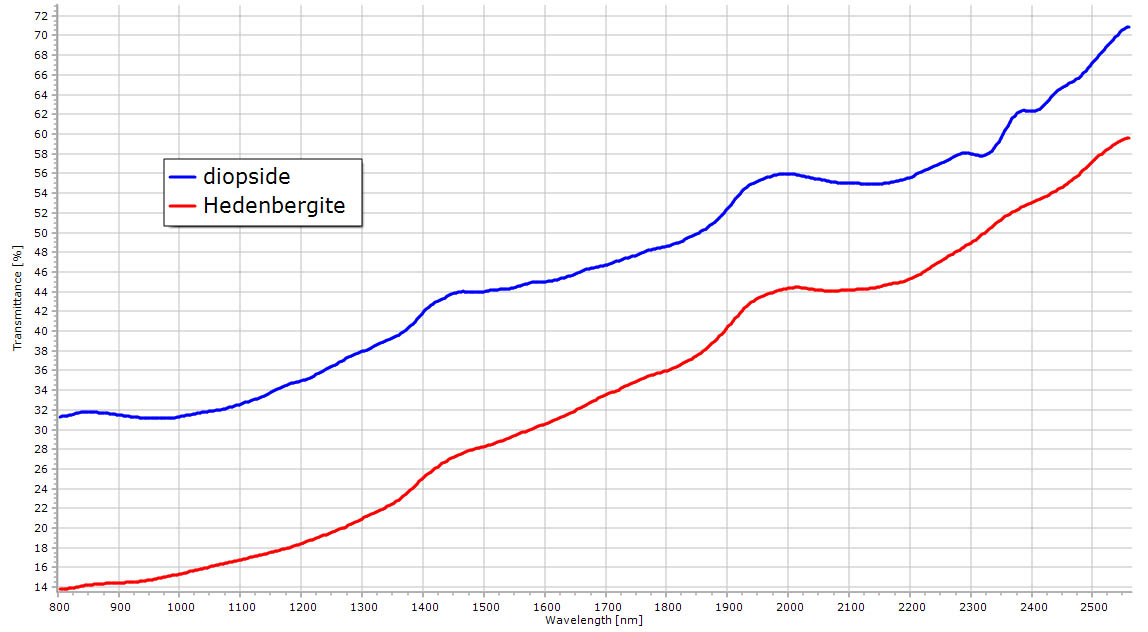 |
| The water present in the Ekmanite structure can be seen from this spectrum at 1900 nm. A small peak at 2325 nm can identify hydroxyl groups. |
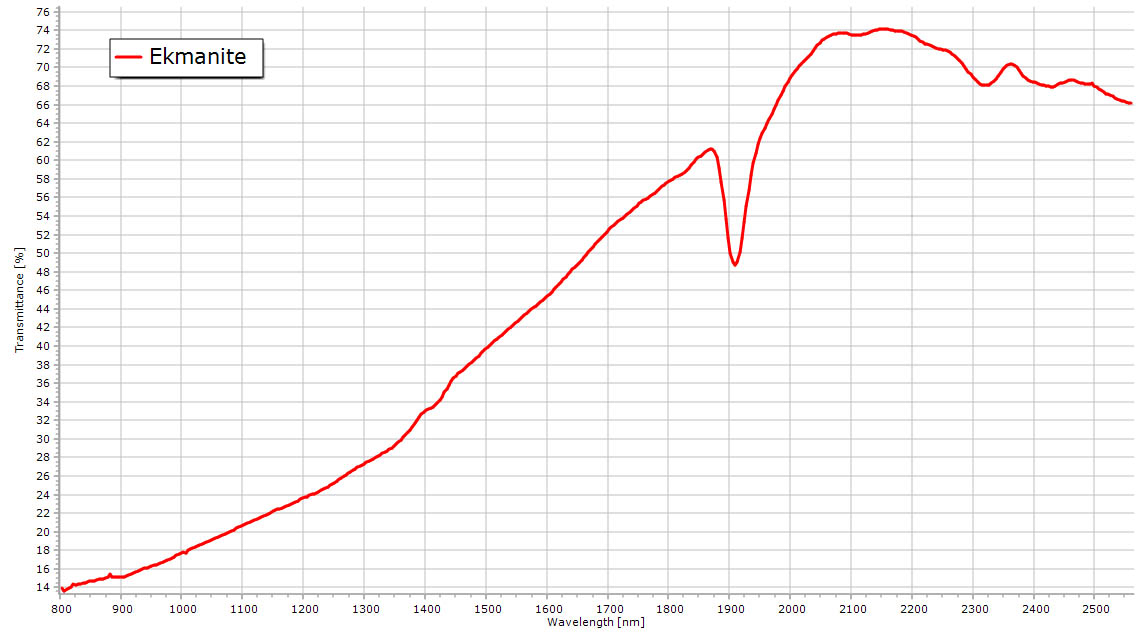 |
| The dark hastingsite has nearly no features in the NIR spectrum, the high absorbing material clears the spectrum features. |
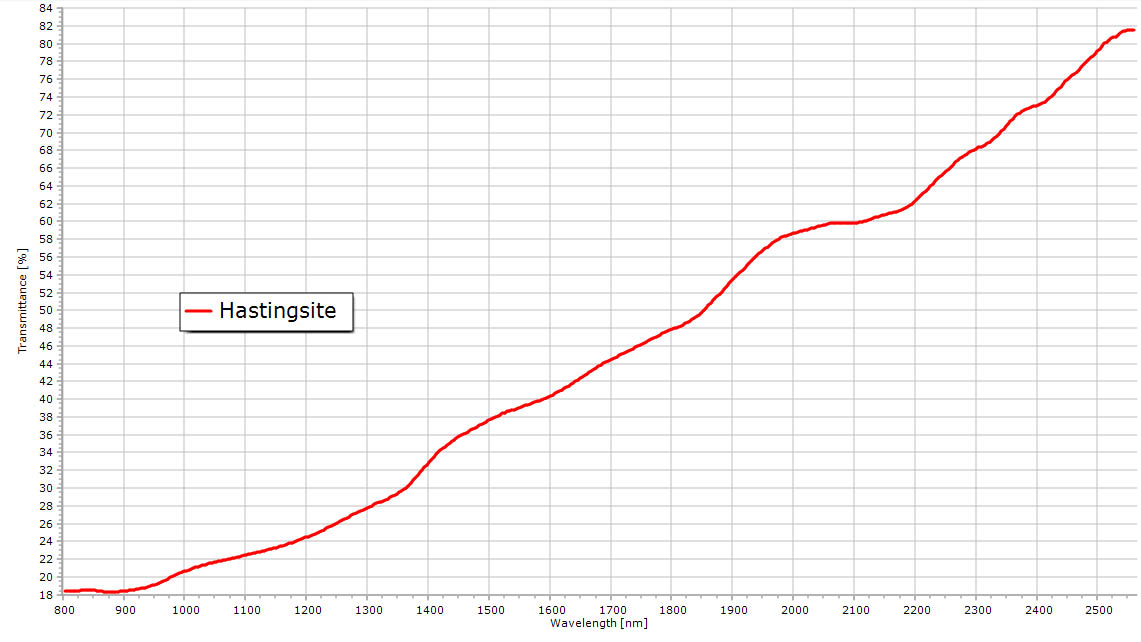 |